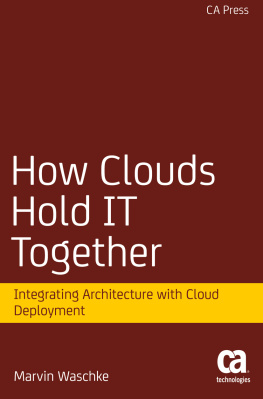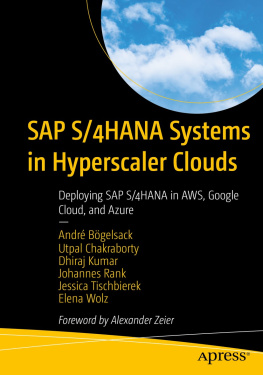Summary
There is debate among economists and skeptics from other disciplines on the significance of the Information Age. For the last fifty years, Moores law has accurately predicted the exponential growth of computing capacity. If exponential growth continues, exceedingly rapid growth will occur at some point, but when the curve will become steep is hard to predict. IT has seen rapid growth in the first decade of the twenty-first century. The rate of change seems to be increasing and IT is penetrating into lives in ways that were impossible a few years ago. IT may have reached escape velocity. Service-orientation, cloud, and IT integration are critical in harnessing the blast of new capacity.
For many people today, information technology (IT) is troubling. The benefits from computing have always been apparent. But from the beginning prophets have warned that humans might someday become dominated by their machines. Yesteryears dystopic speculation has given way to todays icy realism. The stagnant unemployment rate and the soaring stock market following the 2008 financial crisis raise questions. Have we reached a point where businesses can increase output and profit without employing more people? Have the machines really begun to replace humans? Where does IT fit in?
Rumination over the potential elimination of jobs by computers has been a popular topic for many intellectuals, from science fiction writers to economists and statesmen. The standard retort to the fear of job elimination has been that computer-driven increases in productivity go hand in hand with increases in demand that generate more, not fewer, jobs. This answer has been borne out through decades of prosperity. Has the balance changed? Did the triumph in 1997 of the IBM supercomputer Deep Blue over the reigning World Chess Champion, Garry Kasparov render grand masters obsolete? Did the defeat in 2011 of Jeopardy! champion Ken Jennings by Watson mark a turning point in the economy?
Information technology has evolved rapidly since its inception, and enterprise computing has changed with it. Cloud service management is an approach to designing and managing enterprise IT that represents much of the progress that has been made in computing, particularly the progress of the last decade and a half.
This book examines three related strands of recent IT development: enterprise integration, service management, and cloud. These three strands all have roots deep in the history of computing, but they are combining and blossoming, beginning to dominate both enterprise and consumer computing, and changing national economies. I will explain these aspects of IT architecture, how they influence business and society, and how to plan and design projects based upon them.
I am a software architect, development manager, and a developer; not a stock market analyst, a business executive, or a product manager, but this book is meant for all these roles. Stock market analysts want to know where the next big thing will drive the market; executives look for a map to guide their company to success; and product managers are on the prowl for attractive new products and features to offer to their customers.
Inevitably, the software architect in me will often show in this book. This is not to slight the other important participants. Architects are often in the background supporting visionary leaders who introduce new products and concepts to consumers. Architects also have vision, but it is of a different type. They envision the software and its interaction with physical or virtual hardware, its strengths and limitations, how it can be made reliable and efficient in production. They must also anticipate that successful software continually changes and adapts to evolving business and technical environments. The architects view encompasses the entire IT system, the integration of all its components, both those deployed on a cloud and traditional components on the enterprise premises. The architects down to earth concentration on the workable and feasible often offers insights critical to entire cloud projects.
Until outsourcing became popular, IT management assumed that every aspect of the datacenter was under direct control of the IT department. Cloud further reduces IT control. When a cloud is public, personnel outside the enterprise reporting structure have control of equipment, data and production processes that were traditionally entrusted to enterprise IT.
These changes affect everyone. Executives must institute new ways of assuring that systems deliver services that align with corporate goals and are accountable to enterprise governance. Product managers have a range of challenges and opportunities to transform into products for their customers. Developers have new technologies to master and new ways of working on projects that have unfamiliar requirements and new goals.
An architectural view of cloud straddles the visionaries who anticipate the final product, the executives and managers who guide IT, and the developers who design components and write the code. The architectural view provides both perspective and practical patterns and guidelines for planning and creating a successful cloud implementation in an environment that combines cloud and on-premises components. Visionaries can gain insight into what is feasible and what is not and increase the depth of their vision. Executives and managers will see aspects of clouds that will change the way they conduct business. Developers will get some well-deserved help in understanding the both new and perhaps strange requirements and technologies that cloud puts before them.
Advances in Computing
Computers have become more accessible and even indispensable to a wide swathe of the population in both developed and less-developed nations. Some of the new ways in which we interact with computers are obvious. Social networking applications such as Facebook have worked one kind of transformation. Social networking takes the near-universal access to networked computers now prevalent and adds content with universal personal appeal. This means that computers are used by segments of the population that would not have touched a computer a short time ago. For example, my octogenarian mother-in-law got her first computer only a few years ago. She now sends and receives email and posts photographs and comments for friends and family daily, but she would not have considered owning a computer in 2000.
When I took a chemistry class with a computing project at university, students were not allowed to touch a computer. We passed in punch cards and received printouts through what looked like a bullet-proof security window for a check-cashing service in a bad neighborhood. The irony is that the old IBM 7094 behind the security wall did not have a hundredth of the computing or storage capacity of my mother-in-laws laptop. The computing power, network capacity, and storage required for a single Facebook page were not be available to a major research lab in 1967, when I took that class.
The success of phenomena such as Facebook depends on the technology that makes social networking possible, but it also depends on a society that has evolved to the point that both the technology is accessible and the content that people want is available. This requires computing and storage capacity that far exceeds the requirements of IT of the past.
The smartphone has worked a related transformation by changing where we compute. When we roll up our sleeves to do some computing today, we dont go to a datacenter. There are desktops in our offices; we tote laptops to and from work; and a fourteen-year-old packs more computing power to the beach in a smartphone than NASA could muster for the Apollo moon mission.










